Washington D.C.
A couple of weeks ago I had an opportunity to go a conference in Chapel Hill North Carolina, and I decided to tack on a vacation to see Washington D.C. and a friend in Virginia. From Nova Scotia, it is kind of on the way. I was particularly looking forward to seeing some of the Smithsonian museums, especially the natural history museum. The plan was to fly in mid-day on a Thursday, stay overnight at a hotel, see the natural history museum on Friday before meeting up with my friend at the end of the day and spending the weekend with her. I would then travel to North Carolina on Tuesday morning. Not a lot of time but enough to get a taste of the city and surrounding areas.
I started my day by taking the metro to Dupont circle and finding my hotel. The metro stations were very dark, looking out of the train window at the first underground station, left the impression of shadowy figures just outside. The underground stations were also uniform in design with this interesting half dome made out of repeating sunken cubes.

Coming from Montreal and Toronto where each station is defined by a colour or piece of artwork, it seemed odd to me that all the stations looked the same. But apparently both the uniform style and dim lighting were both deliberate design choices. I would learn later in the trip, that the ceiling type here is called a coffered ceiling, and is a type of architectural style found in many Washington buildings. When I came home I also found two interesting articles about the design and building of the metro. Washington metro the most iconic subway in the US and Creating the Washington metro
At the Dupont circle station I was amazed at how the escalators went to the surface with nothing but a sloping tunnel to separate inside from outside. Halifax does not have a metro system, but I think even in our maritime climate that we would need some sort of barrier between inside and outside in most seasons. The escalator was also LONG, these two pictures do not do the length of the escalators justice.
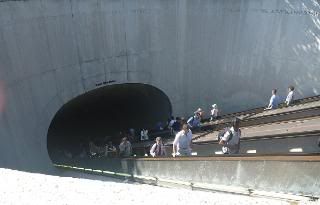

Emerging from the metro I found I was in an area that really reminded me of Montreal, stone and brick homes and offices on tree lined streets.
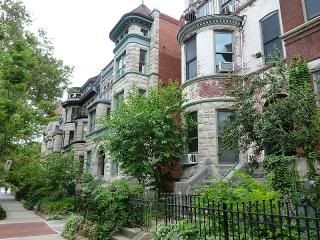
After checking into the hotel, I walked down to the mall, peered at the White house through the fence and then walked over the Washington monument. It was neat to periodically see planes taking off from the Ronald Reagan airport fly past the monument. It wasn’t possible to go up the monument, due to damage from an earthquake last summer, and I was to find that many many things were under construction.
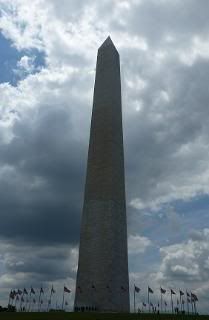
From the Washington monument I walked down to the WWII memorial,
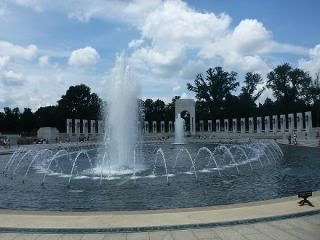
This would be one of my first encounters with the number of quotes etched into the walls. I probably read more inspirational and interesting quotes in my day and half in Washington than I have at any other point in my life.
From the WWII memorial, I walked down to the Lincoln memorial. The reflecting pool between the two sites had been drained of water to accommodate construction. Here is the standard picture of the Lincoln memorial, and what you would see if you looked up, even the ceiling is stain glass! I did find that I spend a large proportion of my time in Washington looking up.

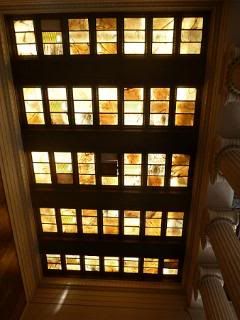
From the back of the Lincoln memorial, you can look across to this pretty bridge to Arlington. There are two sets of statues at the bridge entrance, the art of war made up of sacrifice and valor, and distinguished by its plain horses and the art of peace, distinguished by a Pegasus.

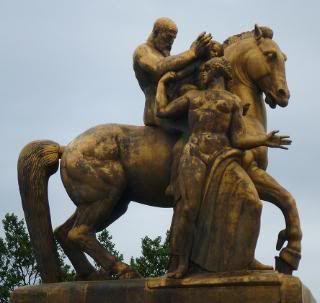
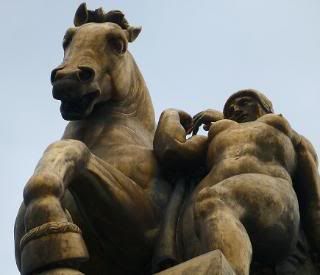
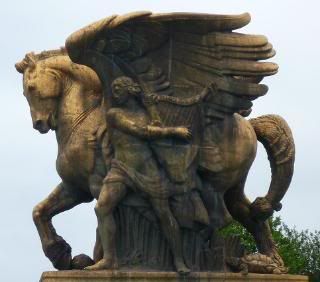
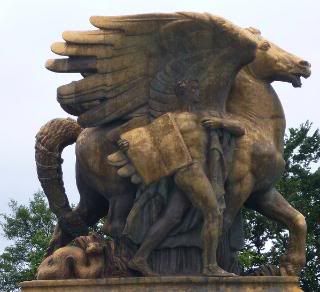
From the Lincoln memorial I opted to walk back towards the White house along the Constitution Ave and passed the Federal Reserve (where there are no tours), and the National Academy of Science, which has a statue of Einstein.
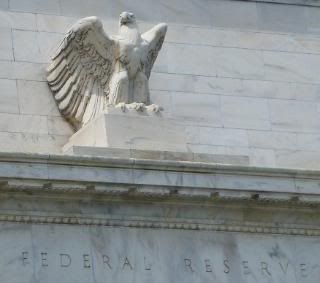

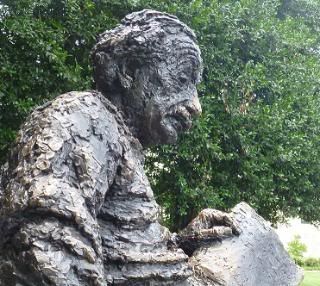
Just after this is when I spotted the Capital Bike Share racks, and found that it was inexpensive and easy, so I took out a bike and cycled over to the Old Post Office, as petunia846 had recommended this stop. This was the first post office/ sorting floor in Washington and it has this great indoor courtyard, and bell tower. I think it would be nice to work in the office that line the upper floors of the courtyard. It also has a really nice view of the Capitol building.
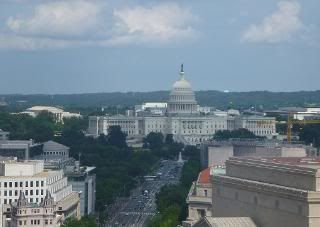

The bells in the bell tower are the congress bells, given to the US from the British Whitechapel foundry and modeled after those in Westminster Abbey. They are still hand rung, and there is a practice every evening at 7 pm, as well as on special occasions. Unfortunately I was not in the area at 7 to hear the practice. I have only seen a bell ringing once before at the Cathedral in Victoria BC.
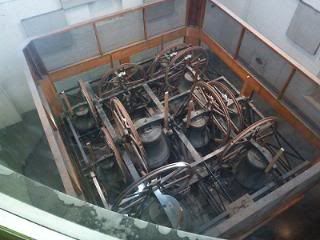

From here I wanted to go to the National Postal Museum, and I had been advised to take the metro instead of cycling, which was easy enough. Unfortunately I got there around 5:30 and so they were just closing. Since I was at Union Station I looked into taking the train to North Carolina, but the Amtrak help desk was really unhelpful. It was also at this station I was advised to look into a night bus tour of Washington. In hindsight I think I would have preferred to skip the tour and instead take one of the Capitol Bike Share bikes to cycle around the major monuments, but I had been told that Washington at night was pretty and it seemed like a good option. Probably if I had done the other option, I would have felt like I was missing something, and I suppose cycling around Washington at night without lights or a helmet would be a really bad idea, so I’m probably just as well off, but I also would have been in bed sooner.
The tour left at 7 and we drove past the Capitol building, the botanical gardens, a number of embassies and parks, we stopped at the White house before going on to the Jefferson memorial.
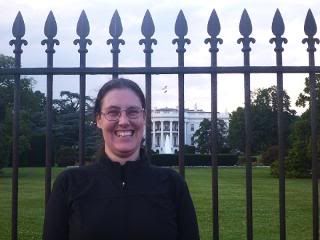

We were told that this little structure was built by the man who came to build the Washington monument, as a house for himself. It doesn’t ring entirely true, but I don’t know either way.
The Jefferson memorial has a very open feel to it and is in very pretty location on the Tidal basin.
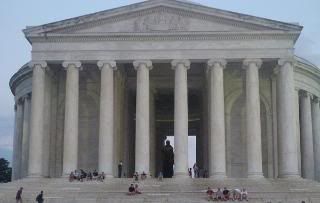
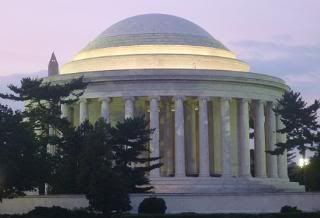
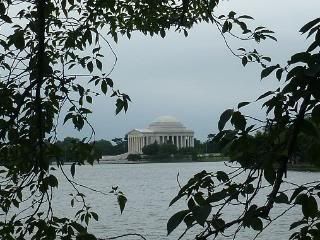
At our next stop we had to choose between the Martin Luther King memorial or the FDR memorial, which seemed too bad, and then we went on to the Iwo Jima Memorial (where a big deal was made of lining up the Iwo Jima memorial, the Washington monument and the Capitol building). We then drove through or past (it was a little dark and so unclear) the Arlington Cemetery and the last stop for the evening was the Lincoln memorial.
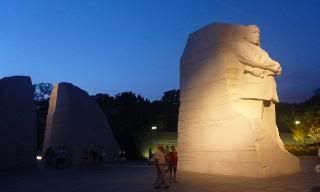
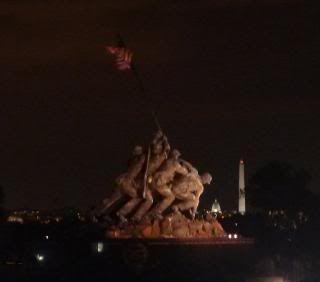
The tour had been full, and so it took a fair amount of time to get people on and off the bus, so in the end our 3 hour tour, was closer to 4.5. I was a little nervous about taking the metro and walking back to the hotel, but that all worked out. On the way back, I passed many bars with scantily clad women standing in line to get in.
I stayed at Hotel Rouge, which had a red theme, and the hallways were definitely red and the rooms less so.
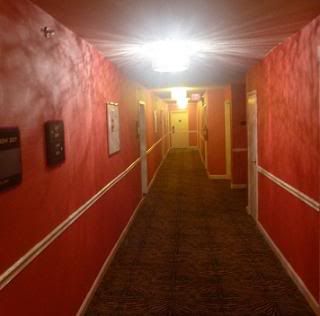

When I told my mom that this was where I was going to stay, she suggested that staying in a red hotel was like staying in a brothel. Somehow I don’t think the garden statuary is going to help change her mind
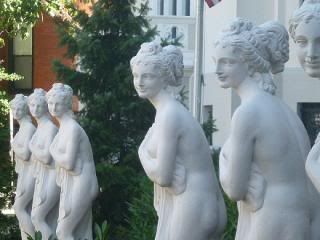
Beside Hotel Rouge is the Kazakhstan embassy, with this cool statue outside.
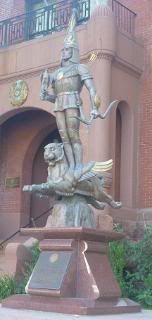
I had thought I had seen this same figure before on the money or on the passport stamp of a friend who has been to the country. My friend said I was wrong and I was starting to believe him as a google image search was not being fruitfull, but this you tube video says I’m right!
YouTube video of embassy staff talking about the statue
I started by second day at the Library of Congress. At the front entrance there is a statue of Neptune, with these cute turtle spouts, and busts of literary people above the doors. I did find all the spaces of this building were highly decorated. This was another building with coffered ceilings, in one wing the cubes were red and in the other wing the cubes were blue. However, these ceilings were in area where you were not allowed to take photos.
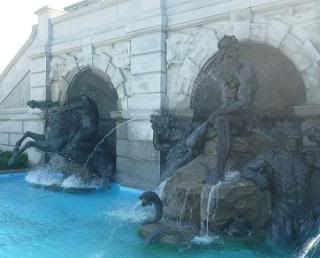
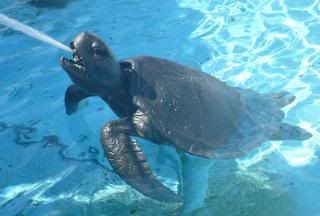
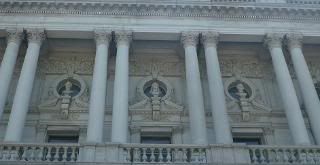
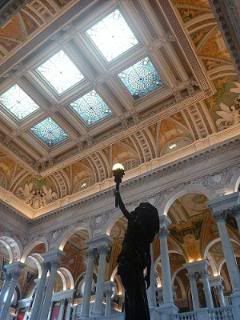
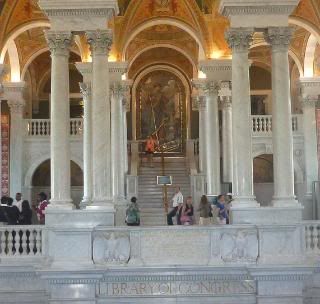
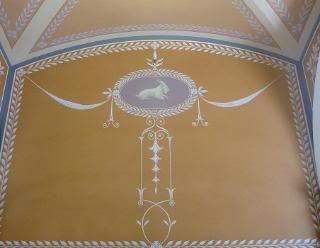
You were allowed to look through glass at the main reading room (so pretty), and then the side wings had various displays, and some under construction. There were two permanent exhibits that caught my eye. Upstairs, there is a recreation of all the books from Jefferson Library. At one point there was a fire in the Library of Congress and many books were lost, Jefferson then negotiated with congress to buy his collection to re-start the library. A second fire in 1851 destroyed about two thirds of the library, but the collection is still considered the base from which the library of congress was founded. When you enter this exhibit you see a space made of bookcases arranged in a spiral. Each bookcase is encased in glass, which allows you to look at both the sides of the books. The binding sides were all beautifully done with leather and embossed lettering. On the page sides, many books had gold leafing or marbled paper. The bookshelves are organized by topic, in the order Jefferson had them in his library. Sticking out of many books are colour coded ribbons, books with green ribbons are books that were original to Jefferson’s library, books with no ribbons are books that were originally in Jefferson’s library and destroyed in the second fire but which the library of congress had duplicates of, books with gold ribbons are books that were lost in the fire and have been purchased since. There are also book boxes with titles on them, and these are book which are yet to be purchased. There is a wide range of topics, history, languages and natural history, and the number of books seems impressive for a personal library at that time.
The second permanent exhibit that caught my attention was the Guttenberg Bible. This was in the lower courtyard space, in what seemed tucked away in a corner. Across from the Guttenberg Bible is the Maine Bible but I’m unsure of why it is a special book. The Guttenberg bible is a three volume set, and to preserve the pages they change the volume every six months and every few days they turn the pages. Apparently there are four perfect copies on vellum, housed by the library of congress, the British Library, the Bibliotheque National in Paris, and one in Germany. There are other compete versions on paper and incomplete versions on both paper and vellum.
Outside on the courtyard of the building there was a mason working, apparently there are tunnels underneath the building and every year they take up a few of the courtyard tiles and repair the masonry of a few of the tunnels.
From the library of congress, I walked pass the Capitol building, I thought about going in, but the line was long I wanted to see the botanical gardens, the Smithsonian Castle, the Enid Haupt Garden and the Natural History museum. There were lots of guards (with big guns in plain sight which seemed weird) in the plaza around the capitol building and that seemed like an awful job as it looked as if they had to stand in full sun and I suspect in lots of heavy gear.


The woman on top of the dome is wearing a headdress with an eagle figure, several people mentioned that at one time the US was considering the wild turkey as the national bird, and how they did not think that a turkey would not look as majestic as an eagle.
The Botanical gardens were my next stop and even though there was really nice looking ripe fruit on the vertical farming display, I resisted and did not ‘harvest and eat’ any of the nice looking tomatoes.
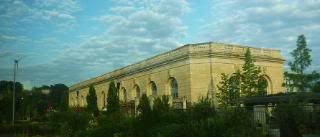
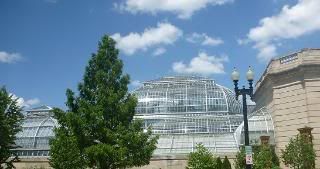
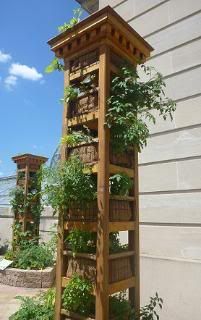
I LOVED the botanical gardens and took many plant pictures, some of which I intend to use in my classes next year. When you walk into the gardens you walk into a main greenhouse that is two stories high, then off the main room there are side wings with rooms dedicated to different topics, orchids, desert plants, food plants, and carnivorous plants, as an incomplete list. From the main room you can also go up to a walkway that looks over the main area and which is ringed by more jungle plants. There are two little outside gardens housed between the main room and the wings. One was a really fun children’s garden, which had arbors, a thick bamboo stand with a little path through it.
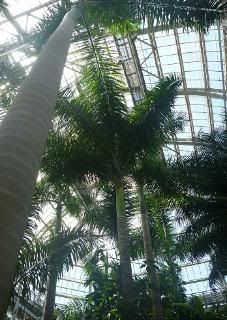
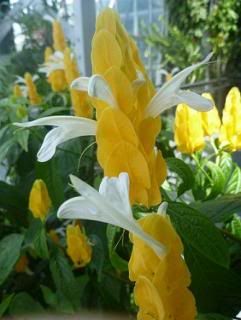
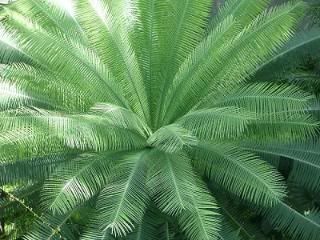
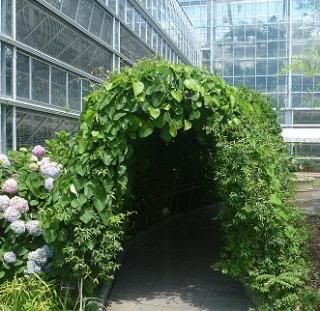
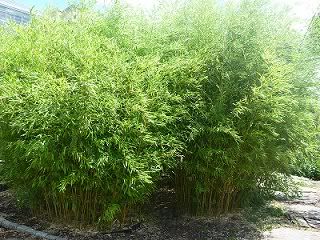
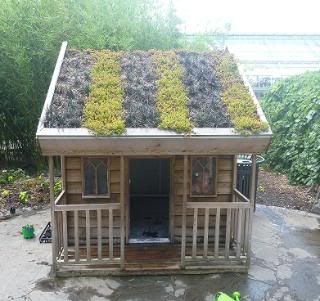
The was also a whole room devoted to ferns and the early plants
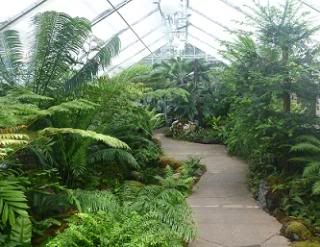
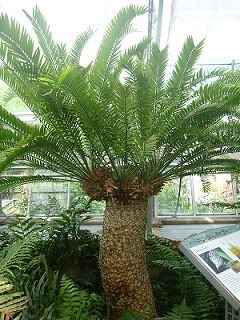
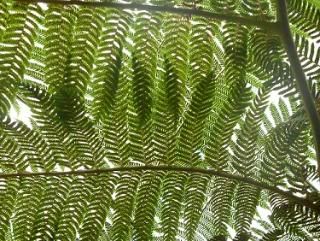
From the botanical gardens I walked to the Enid Haupt gardens, and the Smithsonian Castle. I think the gardens are normally more extensive with walkways off to the side of the castle, but there was construction, and several paths were blocked off, leaving just this main courtyard. Then as you walk into the castle there is this lovely ceiling mural with a parrot, which I found appealing.
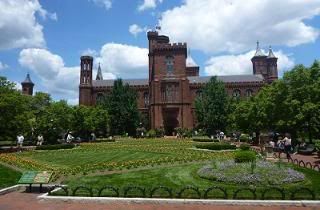
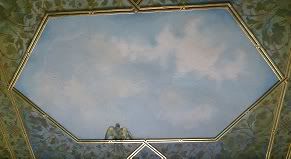
I didn’t spend a lot of time in the castle, and after buying postcards and imprinting pennies, I went and found the carousel. The carousel was surprising empty, with only a few people riding on it.
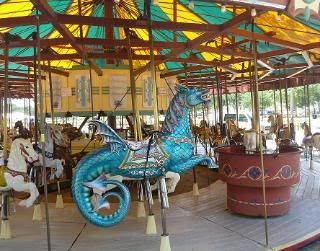
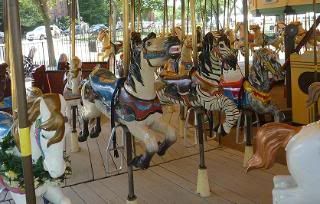
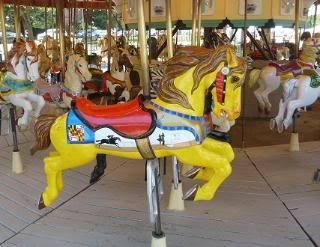
From the Carousel I went to the natural history museum, which was one of the more crowded spaces I had run into. As you go up the steps, they had these huge pieces of petrified wood. Inside I again took lots of pictures of displays that I might use in my classes.
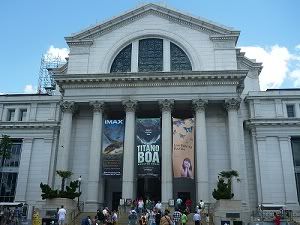

I really enjoyed the rooms on early animals and plant fossils and the comparative skeletons but the other halls seemed cramped, crowded and not as impressive as I had imagined. This is possibly due to overly high expectations but I also think that the Natural History Museum in New York and the Royal Ontario Museum in Toronto both have a more impressive feel.
Nonetheless there were some pretty impressive displays, and in their Marine Hall they had a model of a right whale (whereas almost all other museums I can think of have a blue whale).

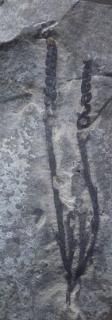
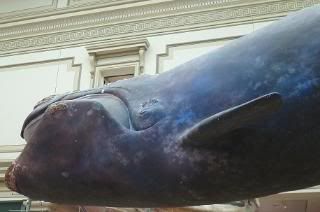
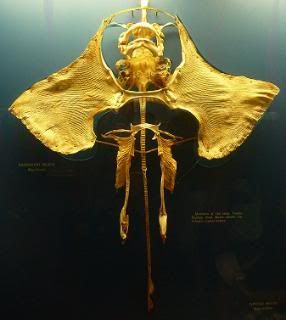

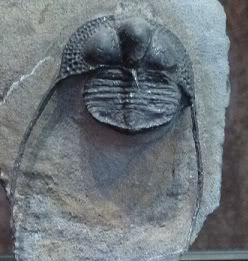
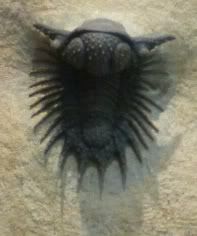
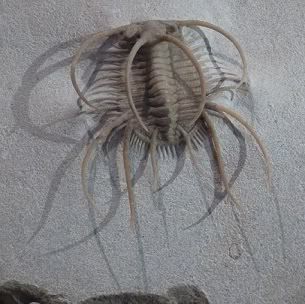
Their special display was on a giant snake fossil. The story starts with One Night at the Lab… and goes on to say that a graduate student was working at unpacking fossils. It amused me greatly that of course this graduate student was working late at night, and perhaps they all do so that the story is better later on.
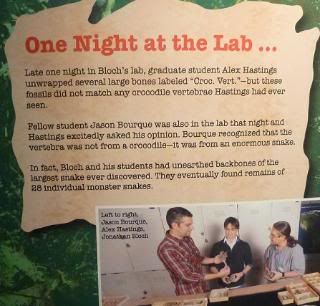

The other special display was on insects and included museum volunteers wondering around with live insects that you could touch or hold. It was a little hard to take a photo of the stick insect on my arm, so her head is blurry, which is too bad

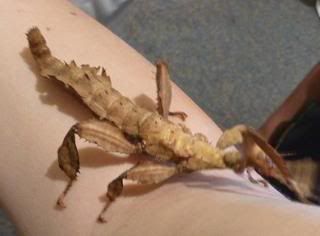
From the Natural History Museum I found my way to the Louden County Bus Stop and the Leesburg bus. This involved lots of asking of people who looked like they were standing in line for a bus and being told not on this corner, try that group of people over there. The bus ride to Leesburg was nice, outside there were rolling hill and lots of trees. This was the first time I noticed how green the country looked.
After the weekend with my friend, she had to work part of the day in Washington, and so I went in with her, for another whirlwind day.
We started off in the Renwick gallery, which is dedicated to American Craft. We had to take the service entrance in, as they were receiving a very large piece of artwork for their next display.
Once inside, you walk up a set of grand entrance stairs, at the top of which are statues of art deco women standing on tip toe, holding torches. Each of the rooms from the main entrance then have collections of painting, ceramics, woodworks and fine metal works.
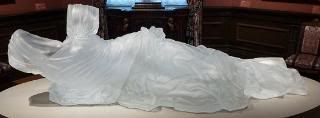
This piece is made out of glass and is of a reclining woman in a draped dress, without the woman.
After the Renwick, I opted to take out a Capitol Bike Share bike and revisit the MLK and FDR memorials. Look at this cute Lion statue outside of Corcoran Gallery of Art.

I loved the feel of the FDR memorial, it is a series of open spaces bounded by rockwalls and waterfalls, one for each of his four presidential terms. The wall quotes reflected the key aspects of each term. This is also where I learned that Elanore was the first US representative to the United Nations. When I relayed this to my mom, she informed me of a McGill connection. At the time when Eleanor Roosevelt was chair of the international committee on human rights, the committee asked John Humphres, who was a law professor at McGill in Montreal, to draft a statement of Human Rights. He drafted a 400 page document which was then revised to become the Universal Declaration of Human Rights. Interestingly his contributions were largely forgotten or ignored and credit for the drafting the declaration was given to other people, until a review of his personal papers found an original draft in his handwriting. I think the review of his personal papers occurred when he donated them to the McGill library on his retirement.
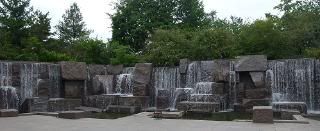
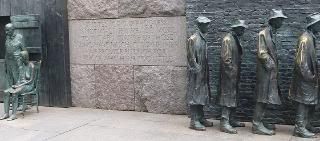
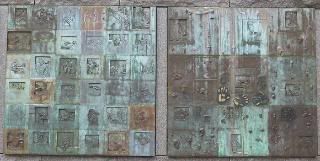
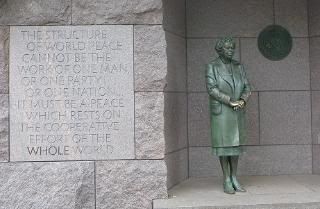
Along the tidal Basin, there is the Japanese lantern that was a gift from Washington’s sister city Tokyo. Apparently it was shipped over in four pieces and there were no directions as to how to put it together. So employees at the librarians at Library of Congress were tasked with figuring out how to put it together.

The last stop was at the National Gallery of Art. When you walk in there is a large central room with a dome ceiling and a fountain. Off this area are two wings with a central hall with statuary and rooms off these halls with paintings. Wandering through the rooms, it is really easy to feel as if you’ve missed something. About three quarters of the way down the hall (in each direction) there is an indoor terrace, with a central fountain, large plants and comfortable seating. This looks like it could be a very nice and peaceful place to sit and read.


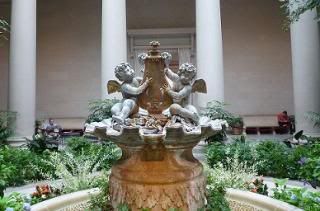
I was out of time after the art gallery, but walking back to my friends office, I passed the sculpture court. It looks to me like they also have a giant spider statue, like the one in front of the National Art Gallery in Ottawa, but as I was passing by the sculpture court and was not in the sculpture court I can’t say for sure.
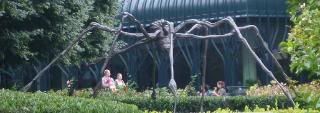
There are lots of other places I’d like to see in Washington, so hopefully I’ll be able to go back someday.
Posted via LiveJournal app for iPad.